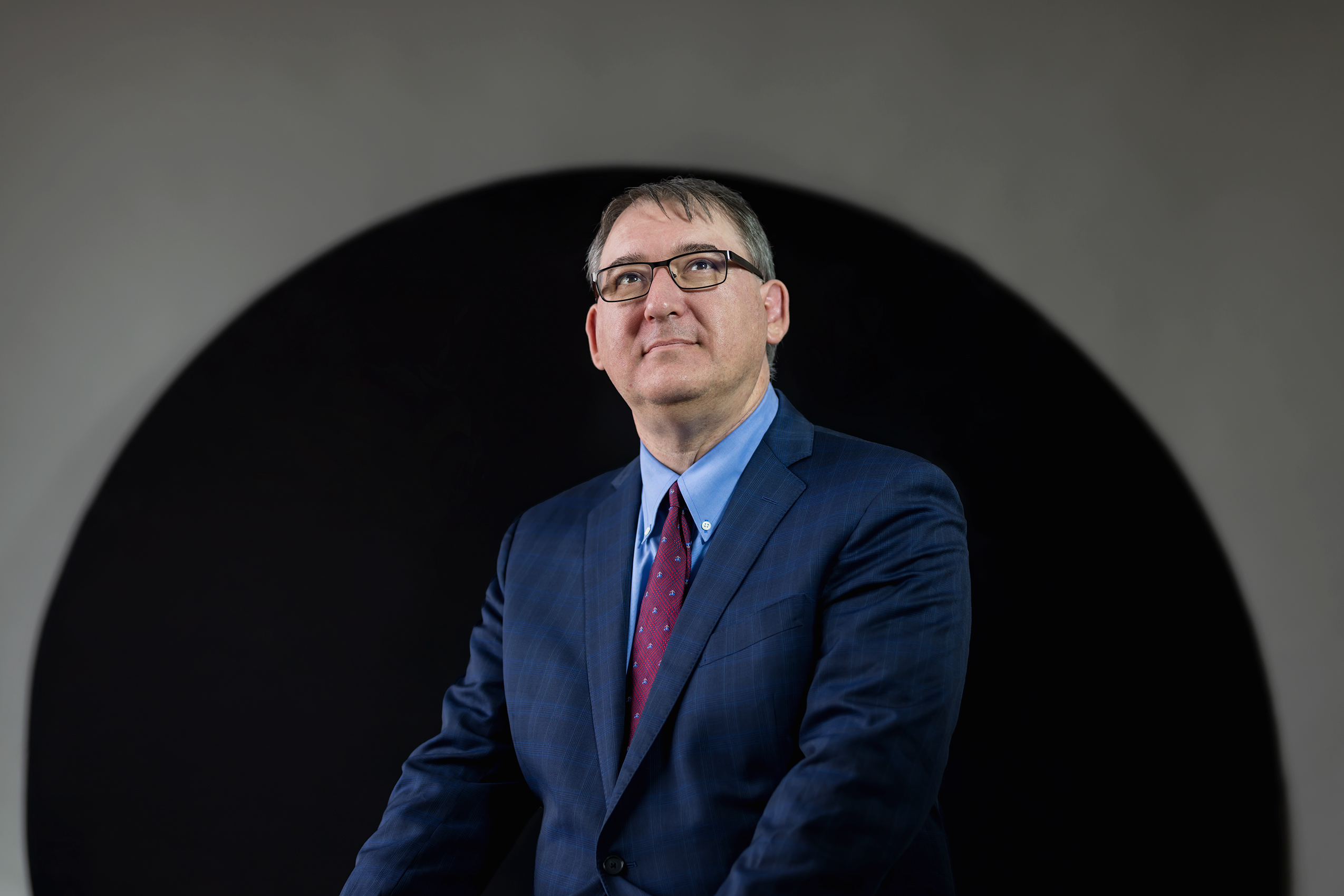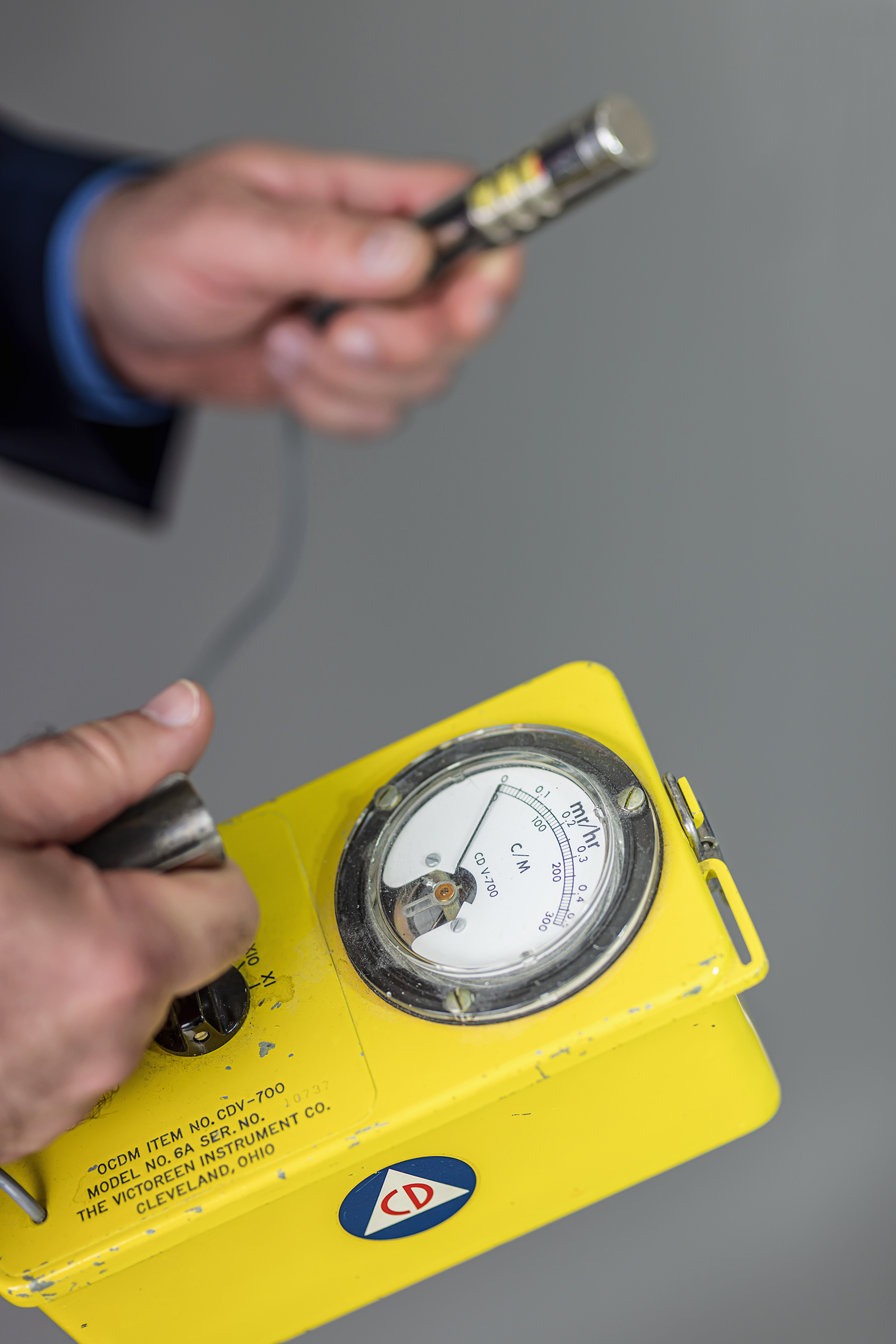Underground Resurgence
by Joanna Thompson
photography by Horst Herget
Nuclear war is an unsettling topic, one that most people would prefer to avoid. But Jack Rozdilsky, a professor in the specialized Disaster & Emergency Management program at York University, wants to get people thinking about how to stay safe in the unlikely event of a nuclear blast. It’s a “low-probability but high-impact type of hazard,” he says.
Between sabre-rattling from certain world leaders and the release of last summer’s blockbuster Oppenheimer, nuclear weapons have been catapulted back into the public consciousness to a degree not seen since the Cold War. Perhaps unsurprisingly, billionaire doomsday preppers have begun capitalizing on this trend by building bespoke private nuclear bunkers – such as Mark Zuckerberg’s 465-square-metre underground structure at his compound in Hawaii. Companies that specialize in luxury bunkers have also begun to spring up, promising to protect the ultra-wealthy for, in one case, the low, low price of just $4.5 million.

But what about the rest of us? As Rozdilsky points out, the average person can’t afford to build their own bunker. He hopes that the renewed public interest will inspire governments to begin building or revamping their old large-scale shelters.
Nuclear bunkers weren’t always so hard to find. In the 1950s, ’60s and ’70s, thousands were built in countries such as the Czech Republic and Switzerland, each with the capacity to shelter hundreds of people. North America built its fair share of underground bunkers as well – though in the United States, many are now privately owned.
In Canada, bunkers tended to be predominantly provided by the government. A notable example close to home is Supply Depot No. 1, located near York University’s Keele Campus. Constructed in 1952 by the federal government, the fortress-like structure functioned as both a bomb shelter and military supply depot at the height of the Cold War. Made of heavily reinforced concrete, it was built to withstand a powerful non-nuclear blast, such as by a ballistic missile. On the expansive building’s south side was a door leading to a “decontamination centre,” where people could access the Supply Depot following a nuclear attack.
I’ve seen some that have been turned into nightclubs
While today the area has evolved into Downsview Park, hosting popular activities such as a farmer’s market and an indoor vintage clothing and antiques fair on weekends, the aging bunker beneath the park’s surface serves as a poignant reminder of past contingency plans. Within its confines, a preserved pool of potable water stands as a testament to its original purpose.
Government investment in these structures has declined since the end of the Cold War. Rather than being maintained, many bunkers have been subsequently repurposed. For example, a former shelter in the Netherlands now boasts an upscale business retreat. Others have become hotels, apartments, restaurants and data centres. “I’ve seen some that have been turned into nightclubs,” says Rozdilsky.

Famously, Canada’s Diefenbunker – named for former prime minister John Diefenbaker and constructed to shelter government officials in the case of a nuclear strike – was converted into a museum in 1998. Today it is a potent reminder of the Cold War’s grim pragmatism.
I’m advocating at least thinking about this hazard right now
According to Rozdilsky, that pragmatism shouldn’t be solely relegated to the past. With global geopolitical tensions flaring back up, he believes it’s time for government officials to invest in infrastructure to protect the public from nuclear threats once again. “I’m advocating at least thinking about this hazard right now,” he says.
In addition to having public access to nuclear shelters, cities need to have systems in place to notify citizens of an impending strike and direct them to safety. Phone notifications are a good place to start; however, people also need access to things like maps and evacuation routes to avoid complete chaos in the event of an emergency. “It’s an area where we can do better,” Rozdilsky says. But the good news is that it’s something most governments have the capability to improve on right now. And, at the end of the day, “I think just raising awareness is something that’s important.” ■